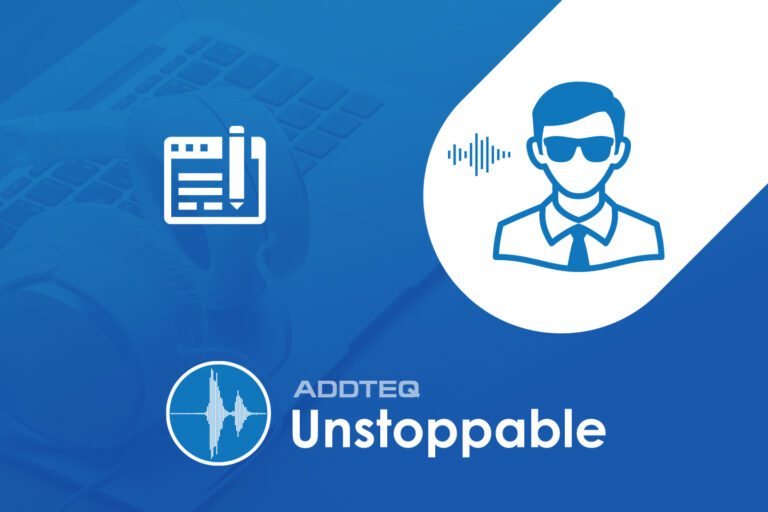It’s time to go, go, go!
As we mentioned in our recent blog on migrating your Enterprise to the Atlassian Cloud, there are less than two years until Atlassian completely discontinues support for its server products. Time is running out for the Atlassian server suite, and for most organizations, the Atlassian cloud is the ideal destination.
The Atlassian Cloud offers many benefits, including increased agility, managed updates, and robust security, all with no hosting and maintenance overhead. Automatic updates ensure the Atlassian Cloud is always up to date. You get immediate access to the latest features, security updates, and more without planning, effort, or downtime. Atlassian manages all aspects of hosting and deployment, freeing you from the enormous responsibilities of maintaining servers, buying and renewing software licenses, data storage, and more. It has been built for scale, ensuring the same level of service is provided to organizations of all sizes.
In short, with the Atlassian cloud, you get to choose how you spend your time, focused on the core goals of your organization and not maintenance.
How do we get to the cloud?
To ease the burden of migration and reduce complexity, Atlassian created Cloud Migration Assistants for Jira, Confluence, and Bitbucket. These tools are free to use with your Atlassian Server tools and can help you assess & audit your apps and clean up your data before migrating.
- The Confluence Cloud Migration Assistant can easily migrate your spaces, users, and groups to Cloud.
- For Jira Software, Jira Service Management, and Jira Core, you can use the Jira Cloud Migration Assistant to migrate your data.
- For Bitbucket, you can use the Bitbucket Cloud Migration Assistant to migrate your code, users, and pull requests.
As great as these tools are, they do have some limitations. We will go over some of the Jira Cloud Migration Assistant (JCMA) limitations and the steps you can take to overcome them. It would be best if you took some time to learn about what data gets migrated with Jira Cloud Migration Assistant but for our purposes, what you need to know is the JCMA will not migrate certain Jira global entities, including:
- Dashboards
- Cross-project boards
- Boards not connected to projects you are migrating
- Boards that belong to inactive users
- Filters on boards that are not migrated
What if we need all of our dashboards?
One way to ensure all of your data is migrated to the Atlassian Cloud is to use the Jira Site Import migration method. Jira Cloud Site Import uses an XML backup to import everything into your Cloud site. There are two factors to consider before using this method:
- As of February 1, 2022, Jira Site Import was made unavailable for Server to Cloud migrations in which fewer than 1,000 users were being migrated.
- A Jira Site Import will overwrite all existing data in your Cloud site, so it is only recommended to move to a new Cloud site.
Still, Jira Site Imports are not ideal for many organizations. As Atlassian mentions, the site import method is fragile, does not offer flexibility (no option to migrate in phases), and does not support as many migration use cases as the JCMA (for example, unable to migrate apps). If only we could use the JCMA to migrate all of our dashboards…
You can – by following Atlassian’s documented process and putting in a little extra work, with some caveats.
Out of the box, dashboard migration is not a feature of the JCMA. However, some features in Jira are not enabled by default and require an extra step to be enabled. These features are referred to as dark features or feature flags.
- To manage dark features, you need to be a Jira administrator
- The dark feature described below is available from JCMA version 1.6.2 onwards
- A bug in the JCMA was introduced after version 1.6.5 that prevents the use of this feature. Atlassian plans to address this bug in version 1.7.0 – we have provided a workaround for you below.
Take caution before proceeding
Before proceeding, we must urge caution. One should always be careful when working with dark features as they may cause problems if misused, and their effects will impact the entire instance. Atlassian’s documentation recommends only using dark features when instructed by Atlassian Support. If you consider this, we strongly advise you to reach out to Atlassian before taking action.
- DO NOT ENABLE THE FEATURES OUTLINED BELOW FOR EVERY MIGRATION PLAN
- Before proceeding, run a complete test migration and post-migration analysis on your test site.
- The recommendation is to migrate this data as the last part of your migration.
- You should use a dummy project to initiate migration
- Dashboard migration assumes all dependencies such as projects, filters, software boards, sprints…etc. have already been migrated to the cloud. Otherwise, dashboard migration may not work correctly, and dashboard gadget failure may occur.
The dashboard migration dark feature of the JCMA currently supports the migration of dashboards, dashboard share permissions, gadgets, and gadget user preferences. While re-migration is possible, you should take note of the following:
- No duplicate dashboards will be created due to re-migration, though gadgets may be duplicated.
- Duplicate dashboard names will result in a failure to migrate.
- If gadget references (project, filter, custom field, etc.) are deleted, dashboard re-migration will reconstruct the broken gadget without manual intervention.
- Admins can delete a dashboard or its gadget to ensure it is re-migrated. JCMA migration will create all missing items.
Remember to test first and test thoroughly
With or without using this feature, we strongly encourage you to perform AT LEAST one test migration before moving forward with any production migration. Testing verifies the process of migrating data from your current Server or Data Center instance to your new home in the Atlassian Cloud. It does so with limited downtime and no data loss or issues with data integrity.
Testing will ensure a smooth transition without putting your data at risk. Doing so will allow you to test and validate your migration plan. Regardless of your company’s size or the complexity of your migration, everyone moving from Server or Data Center to the Atlassian Cloud should conduct a test migration and review the results before executing a production migration. Doing so will allow you to proceed with confidence. Be sure to perform all steps in the Jira pre-migration checklist and Confluence pre-migration checklist before using Atlassian’s testing guide to walk through your test migration.
Migrating dashboards to the Atlassian cloud with the JCMA
MIGRATING DASHBOARDS SHOULD BE THE VERY LAST STEP IN YOUR MIGRATION
We recommend you THOROUGHLY read ALL of Atlassian’s documentation before attempting to migrate dashboards via the JCMA:
- How to manage dark features in Jira
- How to migrate all dashboards with the Jira Cloud Migration Assistant (JCMA)
- How to install a specific version of the Jira Cloud Migration Assistant
- Bug Report: Misleading error when importing boards
- Atlassian’s Server to Cloud Migration Test Guide
In short, to migrate your dashboards using the JCMA, you will need to use the documentation provided above to perform the steps below in the order presented:
- Completely migrate your Jira users and projects to your cloud test site.
- Create a dummy project on your server instance – create a new project to trigger a project migration.
- Enable the dark feature for dashboard migration.
- If your JCMA version is greater than 1.6.5 and lower than 1.7.0, you will need to downgrade your JCMA version to 1.6.5.
- Note that you will need to enable another dark feature to allow for the installation of an older version of the JCMA.
- Create a new migration and ensure the dummy project you created is part of the new migration.
- Run the migration.
- Disable ALL of the dark features you enabled.
- Restore the JCMA to the latest version.
- Delete the dummy project from your source and target instances.
- Perform UAT on your test site, fixing any issues that arise.
- Repeat the steps above to re-test or migrate to your production site if your test migration and UAT cycles have been completed successfully.
Atlassian has not yet published information on migrating your filters and cross-project boards using the JCMA. While it would not take much effort to find a way to enable the right dark features and do so on your own, please note that you do so at your own risk, given the absence of an officially documented and supported process. We strongly advise against taking this action without consulting Atlassian or a trusted migration partner like Addteq.
Addteq – Your Migration Partner

Cloud migration isn’t as simple as moving data or applications to the cloud. To be successful, you need to thoroughly assess existing workloads and processes, involve your key stakeholders, and explore your cloud options. You’ll need to plan your strategy, review security, compliance, and support aspects, back up data, and train users on new and improved features. An Atlassian Cloud migration is a significant undertaking. To guarantee success, you need to work with an experienced partner who will be at your side for the duration of your migration journey.
With over 15 years of experience providing custom solutions to many customers, Addteq would love to be your Cloud Migration Partner. We have performed many migrations spanning organizations of all sizes, from small, independent businesses to enterprise-level organizations. We have successfully migrated over 500 thousand Atlassian and DevOps users across on-premise and cloud environments. As your Cloud Migration Partner, we will work closely with you and your teams to assess your current environment, recommend a migration strategy, build and execute a migration plan, and provide support once you have transitioned to the Cloud. If a custom solution is required, we can create one that meets your every need.
As an Atlassian Platinum Solutions Partner, Addteq has the industry knowledge and technical experience to work with the full suite of Atlassian products and the vast library of applications these products connect to. We provide a range of accredited Atlassian consulting, migration, and training services, along with integrations and customizations to organizations across all industries. Our advanced knowledge of Atlassian Cloud products, including product configuration expertise, customized solutions, and implementation services, enables us to power innovation to make the most of the Atlassian Cloud.
Our Atlassian SMEs build partnerships based on mutually beneficial relationships. By investing time, implementing the right resources, and focusing on open communication, our Atlassian experts have what it takes to provide solutions that best fit the needs of your business, regardless of size or type.
We’ve been there, we’ve done this, and we’d love to help with your migration.
To get you started, Addteq will provide a FREE Migration Readiness Assessment of your current environment, including license & app assessment, migration steps, major blockers, and much more. This assessment will help you determine:
- Which Atlassian Cloud plan – Standard/Premium or Enterprise – best suits your organization
- Which apps can be migrated and which you may need to find alternatives for
- How you can maintain GDPR or other forms of compliance





